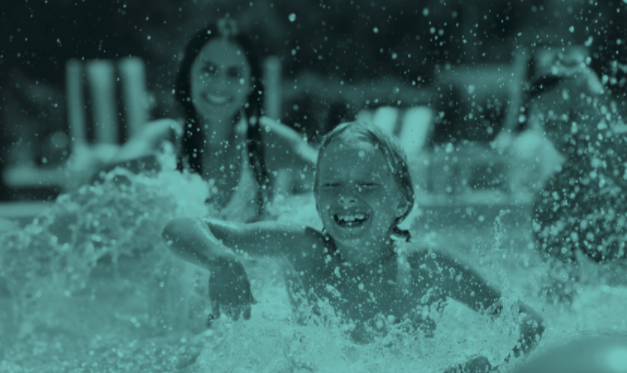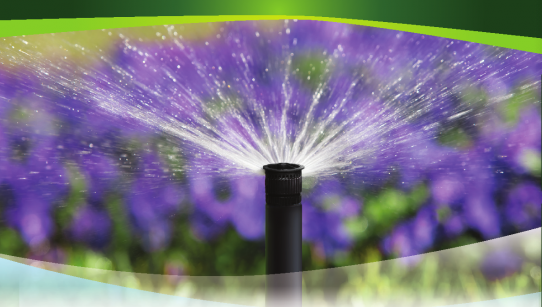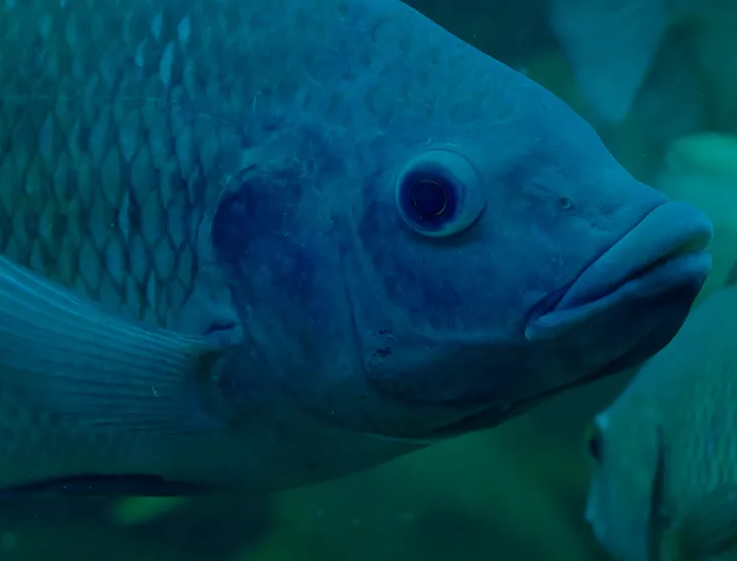Pool Chemistry
A blog on pool chemistry.
Maintaining proper pool chemistry is important and easy. With proper pool water chemistry management, chemicals are very effective, long-lasting, and cost-effective. But the biggest challenge in balancing the pool is knowing what chemicals to use and how much. Each chemical can affect the other's behavior. Therefore, it is very important to understand the relationship between them.
In this blog, we explain how to measure your pool water and adjust chemicals easily. Following are the parameters on which you should focus your attention.
- Total Alkalinity (Ideal range: 80 – 120 ppm)
- pH (Ideal range: 7.4 – 7.6)
- Calcium Hardness (Ideal range: 200 – 400 ppm)
- Sanitizer (chlorine, bromine, or biguanide) (Ideal range: 3 ppm - chlorine)
- Total Dissolved Solids (Ideal range: Less than 2,000 ppm)
Managing the pool alkalinity level
Pool water should have a healthy number of alkaline particles. The total alkalinity of your pool water represents the number of alkaline substances present in the water. Since alkaline particles are a pH stabilizer when the alkalinity of your pool is properly adjusted, your pH will be stable and it won’t fluctuate much. The alkalinity level in a pool must stay between 80 – 120 ppm.
How to raise your swimming pool's total alkalinity level?
Use sodium bicarbonate, or baking soda to increase the alkalinity of pool water. 150 grams of TA+ powder per 10m³ increases the TA value by about 10 ppm. Do not add more than 300 grams of TA+ per 10m³ per treatment.
How to lower your swimming pool's total alkalinity level?
Use sodium bisulphate (dry acid) or muriatic acid to decrease the alkalinity of pool water. 150 grams of TA- powder per 10m³ decreases the TA value by about 10 ppm. Add the appropriate amount of powder to a bucket of warm water or pool water. When the powder is well dissolved, you can spread it evenly over the pool.
Managing the pool pH
The term pH represents how acidic or basic water is. The range is 0 to 14 and 7 is neutral. A pH below 7 indicates acidity, while a pH above 7 indicates a base. Ideally, the pH level of the water in your pool must be between 7.4 and 7.6. Depending on the levels you receive during your initial water test, you may need to increase or decrease your pH.
How to raise your swimming pool pH level?
Adding a pH+ substance such as sodium carbonate (soda ash) can raise and stabilize your pH level. 80 grams of pH+ powder per 10m³ of water increases the pH value by 0.1.
Fill a bucket with water and dilute the granules. When the powder is well dissolved, you can spread it evenly over the pool. When the pH is low, add the product in several batches. Do not add more than 300 g/10 m³ of water in each treatment.
If you see your pH level change frequently, your alkalinity may be very low. If that happens to you, add TA+ to your water to increase alkalinity and stabilize your pH.
How to lower your swimming pool pH level?
Use pH- supplements such as sodium bisulfate, or muriatic acid to lower your pH in the pool. 80 grams of pH- powder per 10m³ of water lowers the pH value by 0.1.
Fill a bucket with water and dilute the granules. You can spread it evenly over the pool once the powder is well dissolved. When the pH is high, add the product several times.
Managing the pool calcium hardness level
If you happen to notice a line or scale around the water line of your pool, it could be calcium buildup. And how often do you see that it is directly related to the level of calcium in your swimming pool? A properly maintained pool will have a calcium hardness level between 200 ppm and 400 ppm.
How to raise your swimming pool calcium hardness level?
To increase calcium hardness to your pool water, use calcium chloride. 144 grams of CA+ will increase the calcium hardness of 10 m³ of water by 10 ppm. In each treatment, you should not dose more than 750 g per 10 m³ of water.
How to lower your swimming pool calcium hardness level?
Drain your pool slowly and fill it with fresh water. Use a flocculant to collect and remove excess calcium.
Managing the pool sanitizer(chlorine) level
Sanitizer keeps your pool free of bacteria and germs. Without it, all pools can become a breeding ground for rapid germination. We can use sanitizers such as chlorine to keep water safe and healthy.
To carefully maintain the chlorine levels, you have to first understand a couple of terms.
Free chlorine
The measure of the amount of chlorine found in water that is not used. The level of free chlorine in the pool must be maintained between 1 ppm and 3 ppm.
Whole chlorine
The measure of the total amount of chlorine present in water. To get the combined chlorine of the pool (used chlorine), subtract whole chlorine from free chlorine.
Chlorine comes in several forms
Chlorine tablets
Set the pH value between 7.0 and 7.4. Add one tablet of 200g per 25 m³ of water every week. If the previous tablet has melted, put it in a clean skimmer basket or chlorine dispenser. Swimming pool water should be thoroughly filtered at least once before releasing the melted product into the water. Keep free chlorine content between 0.5 and 2 ppm and measure regularly using a set of analytical tests.
Granular chlorine (shock in the pool)
There are many types of products you can use to shock the pool. Generally, regular chlorine tablets are not used for this. Calcium hypochlorite, also referred to as cal hypo, lithium hypochlorite, dichlor, and potassium peroxymonosulfate are the chemicals used to shock your pool. They are usually sold in granular form.
These granules need to be dissolved before you add it to the pool and must be used after dusk. After the shock, wait for eight hours before the pool is used.
Liquid chlorine
Liquid chlorine is just sodium hypochlorite solution. This has to be diluted in water before adding to pool water. These are suitable for automatic dosing systems. Add the product such that the concentration of residual chlorine in the water is between 1 to 3 ppm. For example, for a final concentration of 1 ppm active chlorine, add a dose of 8 ml/m³. In this example, the final concentration is reached after 30 minutes at the earliest.
Liquid chlorine may be corrosive to metals and can cause severe skin burns and eye damage. Very toxic to aquatic organisms and to aquatic life with long-lasting effects if proper balance is not maintained.
Salt chlorinator
Salt chlorinator converts sodium chloride (NaCl) into chlorine by electrolysis. Saltwater is electrically charged, which breaks down the salt molecules and produces chlorine (Cl). A salt chlorinator contains two parts- the cell and the control board. The cell converts the salt into chlorine. Water passes through the cells and blades, which are coated with natural metals such as ruthenium or iridium. The cells are charged by the control board, which provides electricity. The desired chlorine level can be set on the control board.
A few other sanitizers in the pool
Bromine
Bromine is similar to chlorine and does not emit a strong odor. It is gentle on the skin but is often used in small ponds and in restaurants as it is expensive.. While bromine is sometimes used instead of chlorine, bromine is not stable and therefore not suitable for outdoor use because it is easily burned by the sun. Ideally, bromine levels should be maintained between 3-5ppm in the pool.
Biguanide
Biguanide is part of a trio of chemical cleaning. For this reason, it cannot be used with traditional algaecides in the pool, shock, or other chemicals. Since biguanide has to be used with other related chemicals, it is more expensive than regular chlorine. If biguanide is used, its levels must be maintained between 30-550 ppm.
Minerals
Mineral systems are not as common as traditional supplements such as chlorine or salt generators. This works by extracting copper and silver ions from your water, which helps control pH. It is recommended to change the mineral cartridge in every six months.
Managing the pool cyanuric acid level
Cyanuric acid (CA) acts as a sunscreen for chlorine, protecting it from the heat of intense ultraviolet rays. Due to its ability to guard against harmful UV rays, CA is recommended for use in outdoor pools only.
Good cyanuric acid level of the pool: 30- 50 ppm.
Managing the total dissolved solids
Have you ever wondered what happens to all the chemicals and substances you put in the water? How is it that all these things do not accumulate in your pool? Where is it going? Yes, it turns out, it piles up. And there is a special number to measure: The sum of the dissolved solids. This number represents the number of solvents in your water. It is common for your pool to have a TDS level of a few hundred anyway, even 1,000. But there comes a point where the level of TDS in a pond is very high, and the only effective solution is to drain and replace the water. Ideally, a pool should have a TDS amount of less than 2000 ppm.
Managing the total dissolved solids
Have you ever wondered what happens to all the chemicals and substances you put in the water? How is it that all these things do not accumulate in your pool? Where is it going? Yes, it turns out, it piles up. And there is a special number to measure: The sum of the dissolved solids. This number represents the number of solvents in your water. It is common for your pool to have a TDS level of a few hundred anyway, even 1,000. But there comes a point where the level of TDS in a pond is very high, and the only effective solution is to drain and replace the water. Ideally, a pool should have a TDS amount of less than 2000 ppm.







.png)




No comments yet